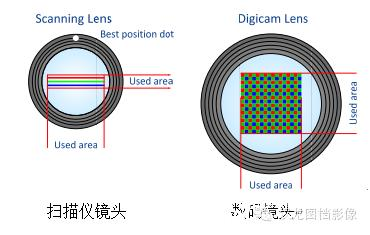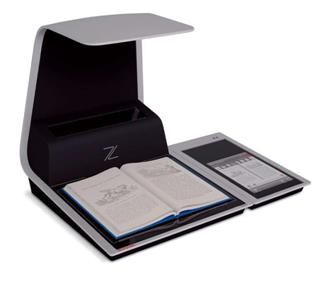CCD, English full name: Charge-coupled Device, Chinese full name: charge coupled components. It can be called a CCD image sensor, also called an image controller. A CCD is a semiconductor device that converts optical images into digital signals. The tiny photosensitive material implanted on the CCD is called a pixel (Pixel). The more pixels a CCD contains, the higher the resolution of the screen it provides. The CCD acts like a film, but it converts the light signal into a charge signal. There are many neatly arranged photodiodes on the CCD, which can sense light and convert the optical signal into an electrical signal, which is converted into a digital image signal by external sampling amplification and analog-to-digital conversion circuits.
CCD is widely used in optical technology. CCD is widely used in scanners, digital cameras and video cameras, except that the camera uses a matrix CCD, which includes x and y directions for taking in plane images, and the scanner A linear CCD is used, which has only one direction of x, and the y-direction scanning is done by the mechanical mechanism of the scanner.
So why should a linear CCD be used in scanners, especially book scanners?

As shown in the figure above, the left picture shows the linear scanner lens and the right picture shows the matrix digital lens.
For example, when we take pictures, we must focus on the focal length, and the characters will be clear. That is to say, the digital lens is only effective in the middle part of the lens when capturing images. The disadvantage of the matrix CCD applied to the scanner is that the matrix CCD is a facet scanning, and the area to be focused is large, which may cause unclear image boundary scanning, chromatic aberration or geometric distortion at the corner, etc., and linear CCD, We all know that it is a line. The lens can be focused on this line. It is much clearer than the matrix CCD, and the image quality is better than the matrix CCD.
In addition, the matrix type CCD sensor assembly uses a planar CCD composed of very small pixels. At present, matrix type CCD sensors are arranged in a standard Bayer filter by 4 times in 2 green, 1 red and 1 blue pixels. With this manufacturing process, the image is reduced by 2 times the green channel and 4 times the red and blue channels. Therefore, compared with the linear CCD sensor, the biggest disadvantage of the matrix CCD is that it generates quite a lot of noise and is collected. The color is not accurate. These matrix CCD image sensors are not suitable for scanners because they are good at taking pictures rather than scanning.
The chart below shows how a matrix CCD sensor is generated.

The design of the matrix CCD sensor is not intended to replace the scanner design, but to obtain different image designs according to the focal length of the target at different distances. Therefore, the matrix CCD is more suitable for cameras and the like. The most technologically advanced linear CCD is used in the world's most advanced scanners.

ZETA Book Scanner
The number of books and magazines scanners is precisely the linear CCD. The Zeta Book Scanner (2012 Red Dot Design Award, 2013 Initiative Mittelstand's IT Innovation Award, 2013 Special Recommendation Award), which has won many European awards, is even more appealing. The world's top library universities, archives, etc. all have a number of books and magazine scanners.

The number of products is dedicated to libraries, archives, museums, political and legal systems, universities, government and corporate research institutions. As the only company in the world covering A3, A2, A1, A0 format and professional precious documents anti-invasion V-type digital equipment and micro-equipment, the number of games provides a variety of solutions to meet file files, rare books, paintings, newspapers, maps, woodcuts. , digital and micro-applications of fabrics and other items.
Antibacterial Foil,Aluminium Antibacterial Foil,Antibacterial Aluminium Foil,Aluminium Foil Rolls Antibacterial
NINGBO FAVORED COMMODITY CO.,LTD , https://www.favored-top.com